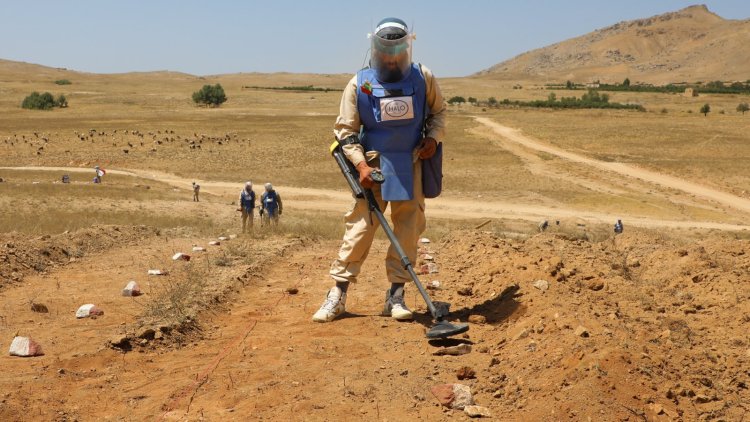Twelve Years at Risk: The Story of a Deminer Who Saves Lives

Attaullah Sapi, a resident of Kunar province, leaves his home every day with one goal: to help those at risk of landmines left behind from years of war—so they can safely return home after stepping outside.
For many years, he has worked with a demining organization. While he finds joy in saving lives, he lives with the constant fear that one day he may not return home from his mission.
In the line of duty, Sapi lost one of his legs while trying to neutralize a landmine, but he continues his work undeterred. His mission, he says, is to save others.
“It’s been nearly twelve years since I began working with a demining organization called OMAR,” he says. “I lost my leg while defusing a mine in Maidan Wardak province, but that very act saved the lives of dozens. I remain committed to my duty and will serve my people until my last breath.”
According to Sapi, a large part of Afghanistan remains contaminated with mines and unexploded ordnance due to decades of conflict, posing a serious threat—especially to nomadic communities and livestock herders.
“Every day,” he adds, “mines and unexploded devices put the lives of many Afghans in danger. Most of the victims are children, which is why public awareness is absolutely essential.”
Among his seven-member team, Sapi is often the one chosen to defuse the mines. His colleagues call him “the brave one.”
At 39 years old, Sapi has spent nearly half his life walking through mountains and deserts to clear landmines. He has seen death with his own eyes—and disarmed it with his own hands.
“My job is like playing with death,” he says. “Defusing mines is not easy. I’ve worked in many provinces and neutralized countless explosives, but the worst memory is from Maidan Wardak—where I lost my leg.”
He explains that when faced with explosives, sweat beads on his forehead and fear shows on his face. Every day, he and his team risk their lives so ordinary people can live in peace.
The explosives they recover are transported to a designated area and destroyed. Sapi urges families to avoid areas marked with signs of danger to prevent further tragedies.
“Demining is a dangerous profession,” he says. “Many of our colleagues have lost their lives while doing this work. But they are heroes—they made sacrifices to save others.”
Fazl Haq, a resident of Kama district in Nangarhar, returned from Pakistan six months ago. Last week, he lost his son in a mine explosion left over from the war. Two of his other children were injured.
He calls on demining organizations to clear the areas still contaminated by explosives from past conflicts.
“My 10-year-old son found a bomb last week and started playing with it,” he recounts. “It exploded while he was playing. My son Shakeeb was killed, and my daughter and another son were injured. They’re still in the hospital. We desperately need public awareness about the danger of landmines.”
Meanwhile, officials from the Taliban-controlled Directorate for Mine Action Coordination and Integration say that approximately 1,150 square kilometers of Afghan land remain contaminated with unexploded ordnance. These devices claim the lives of 50 to 60 Afghans every month.
The UN Office for the Coordination of Humanitarian Affairs (OCHA) previously reported that an average of 110 Afghans—many of them children—fall victim to landmine and explosive remnants of war every month.
